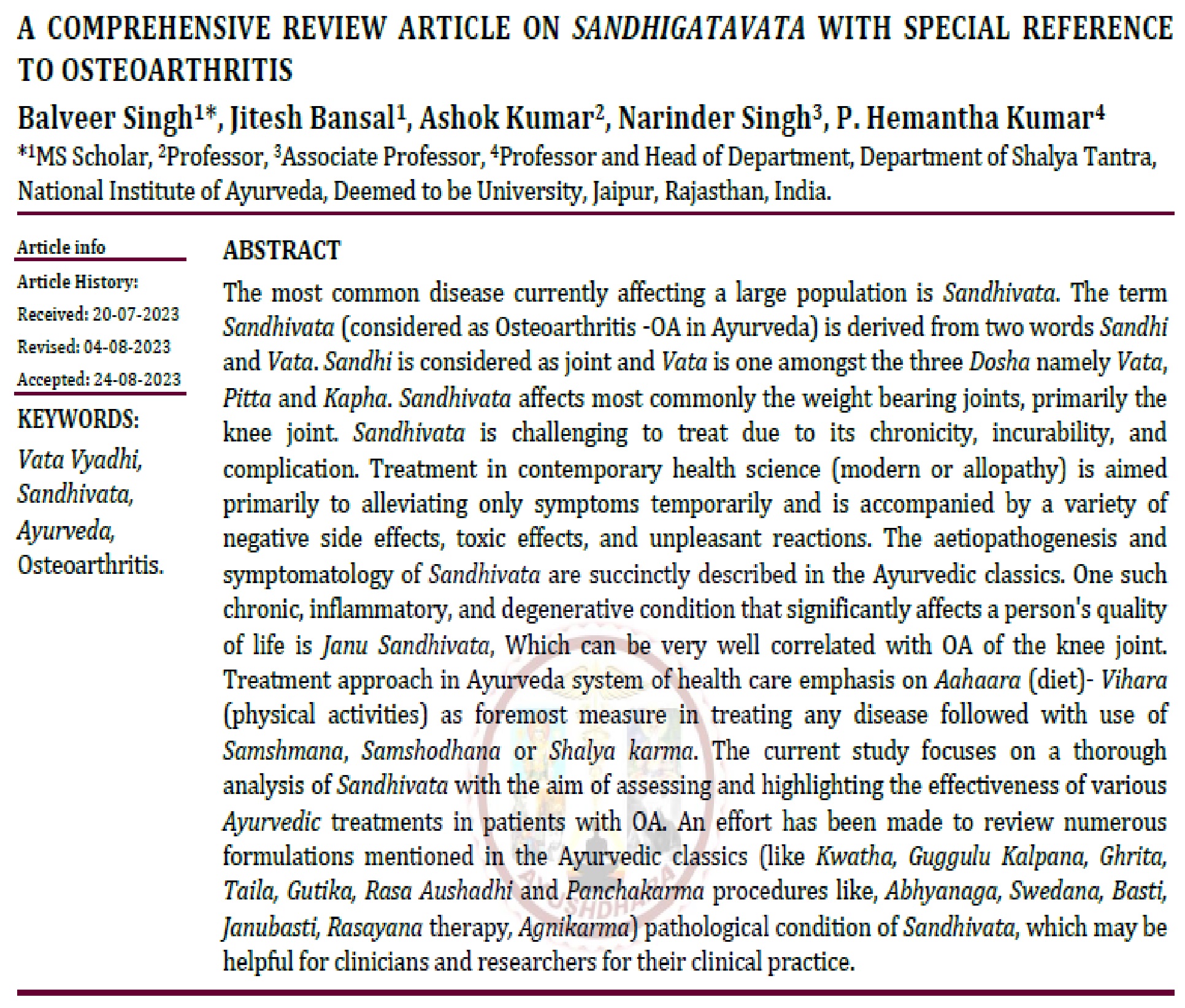A Comprehensive Review Article on Sandhigatavata with Special Reference to Osteoarthritis
DOI:
https://doi.org/10.47070/ayushdhara.v10iSuppl4.1345Keywords:
Vata Vyadhi, Sandhivata, Ayurveda, Osteoarthritis.Abstract
The most common disease currently affecting a large population is Sandhivata. The term Sandhivata (considered as Osteoarthritis -OA in Ayurveda) is derived from two words Sandhi and Vata. Sandhi is considered as joint and Vata is one amongst the three Dosha namely Vata, Pitta and Kapha. Sandhivata affects most commonly the weight bearing joints, primarily the knee joint. Sandhivata is challenging to treat due to its chronicity, incurability, and complication. Treatment in contemporary health science (modern or allopathy) is aimed primarily to alleviating only symptoms temporarily and is accompanied by a variety of negative side effects, toxic effects, and unpleasant reactions. The aetiopathogenesis and symptomatology of Sandhivata are succinctly described in the Ayurvedic classics. One such chronic, inflammatory, and degenerative condition that significantly affects a person's quality of life is Janu Sandhivata, Which can be very well correlated with OA of the knee joint. Treatment approach in Ayurveda system of health care emphasis on Aahaara (diet)- Vihara (physical activities) as foremost measure in treating any disease followed with use of Samshmana, Samshodhana or Shalya karma. The current study focuses on a thorough analysis of Sandhivata with the aim of assessing and highlighting the effectiveness of various Ayurvedic treatments in patients with OA. An effort has been made to review numerous formulations mentioned in the Ayurvedic classics (like Kwatha, Guggulu Kalpana, Ghrita, Taila, Gutika, Rasa Aushadhi and Panchakarma procedures like, Abhyanaga, Swedana, Basti, Janubasti, Rasayana therapy, Agnikarma) pathological condition of Sandhivata, which may be helpful for clinicians and researchers for their clinical practice.
Downloads

Downloads
Published
Issue
Section
License
Copyright (c) 2023 AYUSHDHARA

This work is licensed under a Creative Commons Attribution-NonCommercial-ShareAlike 4.0 International License.


